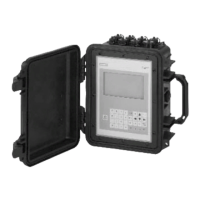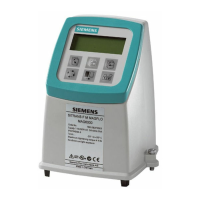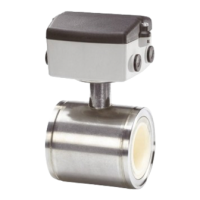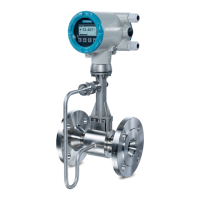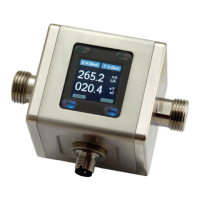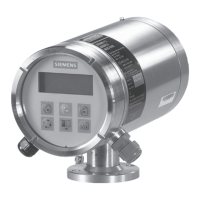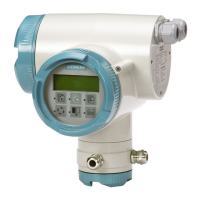4-12
1010GCNFM-3C
Section 4
4.2.8 ThermExp Coef
Use this menu cell to set the Thermal Expansion Coefficient.
To enter the Thermal Expansion Coefficient value:
To enable numeric entry press
Use the number keys to type the Thermal Coeffiecient value.
To register the data press
ENT
ENT
To enter the Pipe Inside Diameter:
Highlight the [Pipe ID] menu cell and press
Use the keypad’s numeric keys to type exact Pipe ID (use in/mm).
To register the Pipe ID press
4.2.7 CC129 THICKNESS
CC129 is the part number for the pipe wall damping material used with all clamp-on gas meters. This
material is applied to the outside of the pipe wall and is used to absorb any acoustic energy that remains
in the pipe wall. The FUG1010GCN flowmeter uses this numeric entry of CC129 thickness to more
accurately compute the gas sound velocity from the total transit-time. Please refer to the installation/
outline drawings for installation and final thickness of the CC129 damping material to be applied to the
pipe. Highlight [CC129 Thickness] and numerically enter and register the CC129 Thickness as shown in
paragraph 4.2.6 above.
NOTE: The units of measure for the “CC129 Thickness” will be the same as indicated for the
Pipe OD and Pipe ID.
NOTE: Do not use ASA schedule code to specify the wall thickness. You must enter actual di-
mensions.
To enter the Pipe Wall Thickness:
To enable numeric entry press
Use the keypad’s numeric keys to type exact wall thickness (use in/mm).
To register the pipe wall thickness press
4.2.6
PIPE ID (in. or mm)
This menu cell allows the direct entry of the Pipe Inside Diameter. If the internal pipe diameter is well
known (as may be the case with meter tube or honed pipe) then this dimension should be entered here.
An accurate pipe ID will provide the best intrinsic meter accuracy for gas applications, where the flow
error will be proportional to the ratio of indicated cross-sectional area to actual cross-sectional area.
ENT
Flow Error =
IDind
2
IDact
2
Observe that the meter will automatically re-compute the indicated pipe outside diameter (OD) when
the Pipe ID is changed. The wall thickness (Pipe WT) will be unaffected by any change to the OD or ID
entry. Although the pipe WT dimension is not as critical as the pipe ID, it is recommended that the wall
thickness be measured (via ultrasonic wall thickness gauge) to insure the proper transducer selection
and accurate sound velocity measurement.

